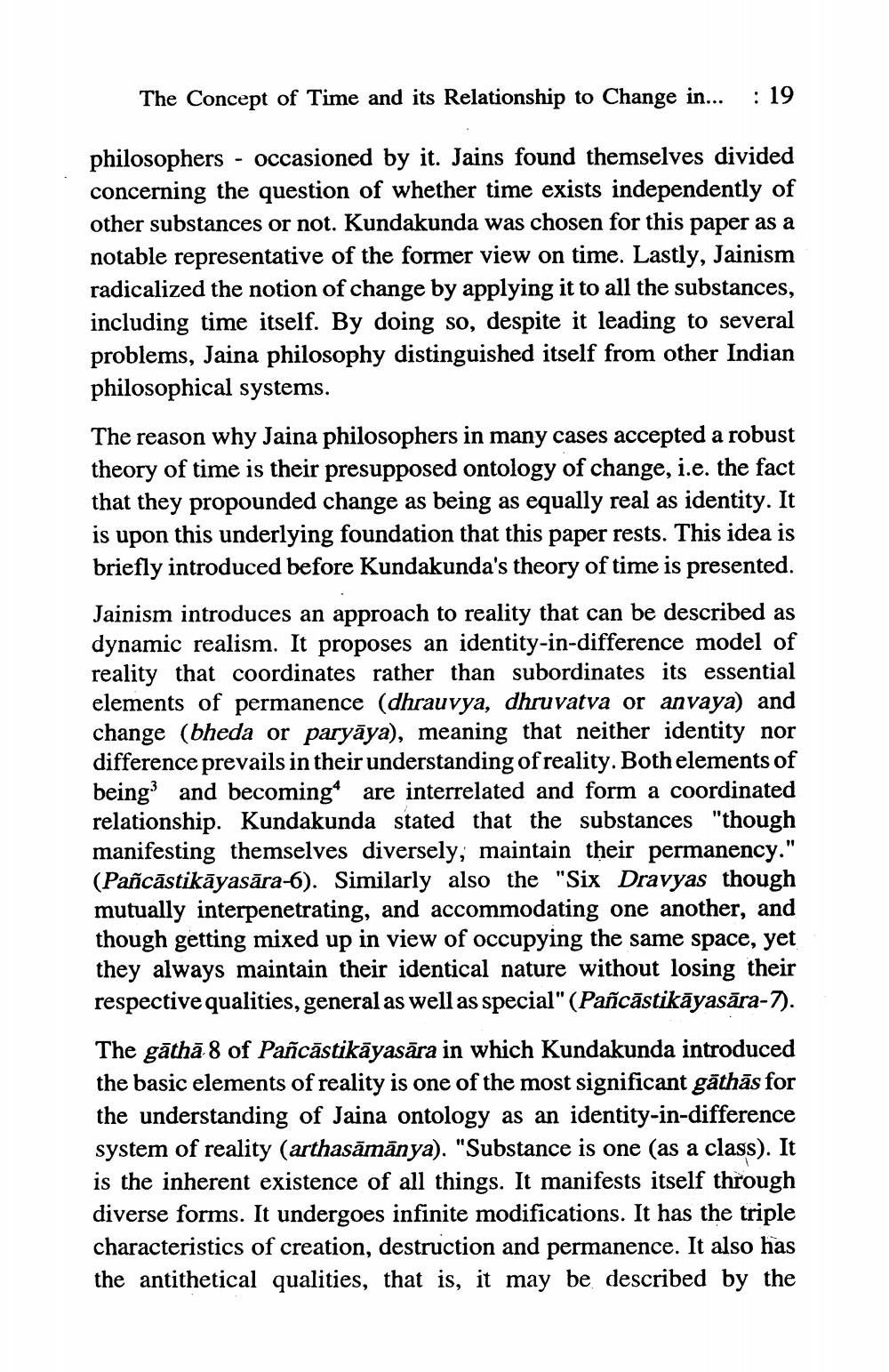________________
The Concept of Time and its Relationship to Change in...
: 19
philosophers - occasioned by it. Jains found themselves divided concerning the question of whether time exists independently of other substances or not. Kundakunda was chosen for this paper as a notable representative of the former view on time. Lastly, Jainism radicalized the notion of change by applying it to all the substances, including time itself. By doing so, despite it leading to several problems, Jaina philosophy distinguished itself from other Indian philosophical systems. The reason why Jaina philosophers in many cases accepted a robust theory of time is their presupposed ontology of change, i.e. the fact that they propounded change as being as equally real as identity. It is upon this underlying foundation that this paper rests. This idea is briefly introduced before Kundakunda's theory of time is presented. Jainism introduces an approach to reality that can be described as dynamic realism. It proposes an identity-in-difference model of reality that coordinates rather than subordinates its essential elements of permanence (dhrauvya, dhruvatva or anvaya) and change (bheda or paryāya), meaning that neither identity nor difference prevails in their understanding of reality. Both elements of being and becoming* are interrelated and form a coordinated relationship. Kundakunda stated that the substances "though manifesting themselves diversely, maintain their permanency." (Pañcāstikāyasāra-6). Similarly also the "Six Dravyas though mutually interpenetrating, and accommodating one another, and though getting mixed up in view of occupying the same space, yet they always maintain their identical nature without losing their respective qualities, general as well as special" (Pañcāstikāyasāra-7). The gāthā 8 of Pañcāstikāyasāra in which Kundakunda introduced the basic elements of reality is one of the most significant gāthās for the understanding of Jaina ontology as an identity-in-difference system of reality (arthasāmānya). "Substance is one (as a class). It is the inherent existence of all things. It manifests itself through diverse forms. It undergoes infinite modifications. It has the triple characteristics of creation, destruction and permanence. It also has the antithetical qualities, that is, it may be described by the




